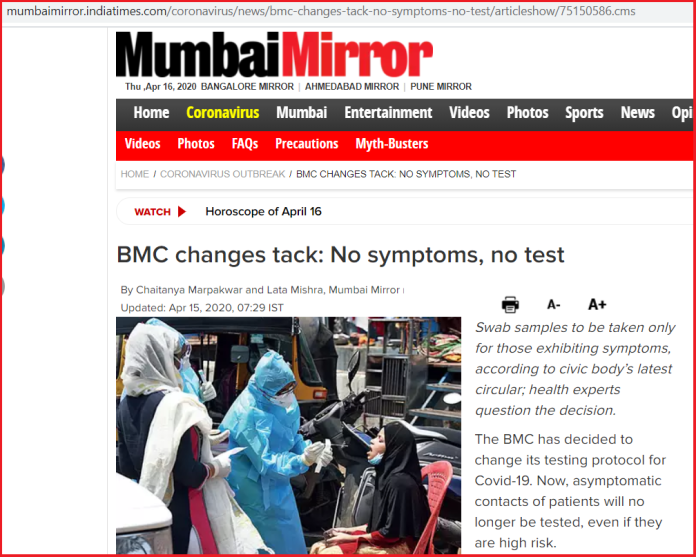There are two basic rules for dealing with the Wuhan Coronavirus pandemic: first, the more strictly we observe the lockdown, the more we overreact, the safer we will be eventually. Second, the more boldly and honestly we face up to the bad news, the better we are prepared to fight it. It is our only way out of this nightmare. Over the last few days, Mumbai, the financial hub of India and the capital city of Maharashtra, has emerged as the greatest spot of worry for India as far as Coronavirus is concerned. This was not unexpected, for the maximum city is our financial capital. In the US, the city of New York has been left similarly devastated by the virus.
In the daily war against the virus, it must be understood that the actual number of cases is not nearly as significant. What is significant is the rate at which the number of cases is increasing. “Flattening the curve”, as everyone talks about nowadays. For example, the state of New York reported over 750 deaths just yesterday. As terrifying as that may be, it represents a growth of just 7% over the number from the day before. A month ago, these numbers were much smaller, but growing at a much faster pace.
That’s why this changed test strategy from the BMC is so worrying. The BMC has decided that it will no longer test contacts of patients, whether high risk or low risk, unless they start showing symptoms.

As the article in Mumbai Mirror notes, the BMC’s new approach differs from the strategy of the ICMR, which advises that “asymptomatic direct and high-risk contacts of a confirmed case should be tested once between days 5 and day 14 of coming in contact.”
It is clear that this new strategy could lead to an artificial drop in the number of patients, giving a false sense of flattening the curve.
It is, of course, important to note that this new strategy does not mean that contacts of confirmed patients will be allowed to go around possibly infecting more people. The BMC is clear that they will be put into quarantine. But remember that the incubation period of the virus is anywhere between 5 to 14 days. Further, disturbing reports have emerged across the world, with instances of the virus taking even longer to show symptoms.
As such, putting contacts of confirmed cases into quarantine instead of testing them delays the feedback which we desperately need to be timely and precise.
On one hand, we should all understand the obvious capacity constraints under which the BMC is operating. On the other, there is room for genuine worry about the possibility of the state government using such tactics to make the numbers appear lower. After all, in the last few days, the state government has come off as almost comical in finding ways of passing the buck. Both related to the gathering of thousands of people in Bandra and the matter of certain privileged persons getting a pass to flout the lockdown. The possibility of some agencies of the state running a PR campaign with celebrities at a time like this also raises questions about priorities.
The role of liberal media is highly suspect as well. Many celebrity journalists have appeared to be more concerned with creating the image of “best CM” for Uddhav Thackeray, rather than holding the ruling party accountable for its performance. I wonder what the liberal media reaction would have been if a BJP-ruled state was the top hotspot in the country right now.
At a time like this, for the sake of Mumbai, Maharashtra and India, we can only hope that both our leaders and conscience keepers (self-appointed or otherwise) can rise above narrow political considerations. This would be an excellent time for Uddhav Thackeray to actually earn the title of “best CM” by performing on the ground. By saving Mumbai, Maharashtra and India. We all wish him well.



